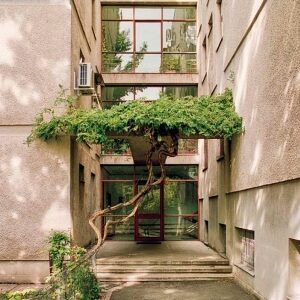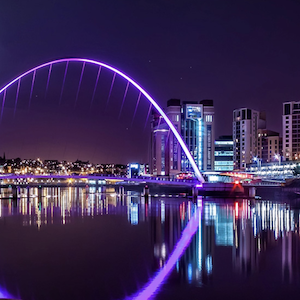CORE: Sacred Structures
By Shannon Brien
Throughout history, the centre of any civilisation was the place of worship. They are a structural reminder of the importance of religion in society.
Religious architecture are amongst the most impressive and permanent monolithic buildings, built to impress the deity they are evidence of worship and dedication.
Presently these buildings are also admired for their architecture, interior design and position.
Hagia Sophia, the epitome of Byzantine architecture, was once a Greek Orthodox basilica. It later became a Roman Catholic cathedral before becoming a mosque in 1453 after Constantinople (now know as Istanbul) was conquered by the Ottoman Turks. All the catholic mosaics were covered and the alter was removed and replaced with Islamic iconography. Hagia Sophia is now a museum and most of the mosaics have been uncovered. It is interesting to see the juxtaposition of the religious iconography and architecture in the one space.
Sacred buildings are becoming universally known for their architecture, art and design and modern constructions reinforce this sentiment. They have begun to step away from extravagant traditional details and by taking a reductive approach, the aesthetic focuses on creating a pure mediative space.
The famous unfinished work of Gaudi, Sagrada Familia, began in 1882 and each aspect of it’s facade is completely architecturally different. Attracting millions of visitors per year, this architecturally and religiously complex building has an estimated completion date of 2023.
Wat Rong Khun is stylistically a Buddhist Temple in the Chiang Rai Province, Thailand. This privately owned art exhibit is owned by local Chalermchai Kositpipatartist who renovated the dilapidated building with his own funds. He consideres the temple to be an offering to Lord Buddha in exchange for immortal life.
Architect Frank Lloyd Wright, utilised natural light in his most expressive house of worship. Described by Wright himself as a “luminous Mount Sinai” the Beth Sholom Synagogue was designed to reinforce and celebrate Jewish ceremony.
The Bruder Klaus Field Chapel, Germany was designed by architect Peter Zumthor and built by local farmers to honour St Bruder Klaus. 112 tree trunks were converted into a hut-like structure then covered in 24 layers of cement, when the layers had set the wooden frame was set alight and the interior was hollowed out leaving charred walls. There is no electricity in the church, it relies on natural light that enters through the ceiling.
Natural light is a common theme in modern religious architecture. The Martin Luther Church, Austria, uses it to illuminate the Church through its warped, dome roof which has three large openings. True to COOP HIMMELB(L)AU form, the roof elements were assembled in a shipyard and by employing ship-building techniques, the church was built in less than a year.
On the outskirts of Istanbul lies the Sancaklar Mosque. This space plays on the natural and man-made elements of the area. Utilising the natural slope of the landscape, this subterranean structure is also surrounded by a thin concrete slab that allows natural light to permeate this structure. Unlike other religions, there is no predefined notion for a place of worship in Islam, this freedom in design allowed Emre Arolat Architects to create a simplistic, clear space for focus on prayer.
By adapting to the changing pace of civilisation, religious architecture is ensuring its relevance in mainstream culture.
Photo Credit: Hagia Sophia, Wat Rong Khun, Beth Sholom Synagogue, Bruder Klaus Chapel, Martin Luther Church, Sancaklar Mosque, Sagrada Familia Press Office












